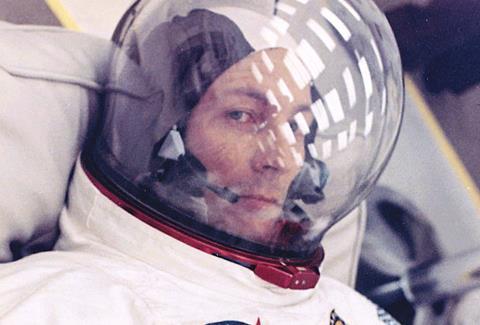Peter Middleton’s immersive Netflix documentary about the ill-fated 1970 Apollo 13 space mission blends new and archive footage

Dir: Peter Middleton. UK. 2024. 97mins
We all know what happened. Apollo 13, the seventh crewed mission in the Apollo space program and the third planned moon landing, launched on April 13th, 1970. Around 55 hours and 55 minutes into the flight, an oxygen tank in the command module blew up, causing the second oxygen tank to fail. With power, water and oxygen supplies depleted, the astronauts, John ’Jack’ Swigert, Fred Haise and James Lovell, were forced to use the lunar module, attached to but sealed off from the rest of the ship, as an improvised ‘lifeboat’.
A gripping, edge-of-the-cockpit reconstruction
Against all odds, and with the eyes of the world following every tense development, the astronauts and the ground control scientists were able to pull off a successful return journey to Earth. But the fact that the outcome is known does not lessen the considerable impact of this stirring, frequently nail-biting account of the mission. Some stories are worth retelling, particularly when they are as well told as this.
British documentary filmmaker Peter Middleton (directing solo here, having previously co-directed Notes On Blindness and The Real Charlie Chaplin with James Spinney) uses a combination of archive audio, film footage and photography, blended with later interviews of key figures and some new footage – including shots that reconstruct the interior of the spaceship – to create a gripping, edge-of-the-cockpit reconstruction of the eventful mission. Netflix holds the rights to the film, but like Todd Douglas Miller’s Emmy-winning 2019 film Apollo 11, which drew from the same rich well of NASA archival resources to tell the story of the first lunar landing, this is a film that repays a big screen viewing.
The mission has been explored cinematically before, notably in Rod Howard’s Apollo 13 with Tom Hanks in the role of Commander James Lovell, and through numerous documentaries in various formats. But this latest film benefits from access to a wealth of previously little-seen material, including the home videos of the Lovell family, which is incorporated to powerful effect in the film. Lovell’s wife Marilyn and the couple’s four children provide an emotional counterpoint to the preternaturally calm, clipped exchanges that unfold through the communication channels between Apollo and ground control.
It seems remarkable now but, as the astronauts had signed exclusive deals with ‘Life’ magazine, a photographer was present in the Lovell living room throughout the unfolding drama, capturing Marilyn’s anguish and moments of despair as she fielded phone calls, sat glued to the ‘squawk boxes’’ that allowed her to tap into the air to ground communications, and attempted to protect her children from the grave reality of the situation.
The extensive audio material is accompanied by footage shot within mission control. And while direct matches between the audio and the visual material are fairly infrequent, deft editing means that the footage at least complements the audio archive of the crisis. Onboard footage is in far more limited supply – understandably, once the oxygen tank blew out, the astronauts had other things on their minds than capturing their situation for posterity, not least the intense physical discomfort of the experience. Since the heaters and fans had to be turned off to conserve power, the onboard temperature dropped to just above freezing, making sleep impossible.
The filmmakers recreate the craft’s instrument board and shoot new footage to bolster the coverage from inside the spacecraft. Together with atmospheric use of music (composed by Spinney), shots showing circuitry swimming in condensed water and alarm lights blinking frantically add considerably to the tension of an already white-knuckle viewing experience.
Production company: Insight Film
Worldwide distribution: Netflix
Producers: Hugh Davies, Clive Patterson
Cinematography: Anna Macdonald
Production designer: Beck Rainford
Editing: Otto Burnham
Music: James Spinney

















![2026_FORUM_LETTER TO ALVIN_Main still[59]](https://d1nslcd7m2225b.cloudfront.net/Pictures/100x67/6/9/5/1469695_2026_forum_lettertoalvin_mainstill59_712728_crop.jpeg)




